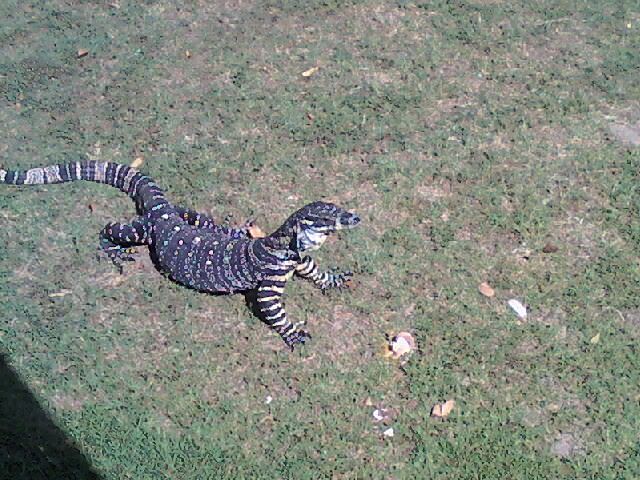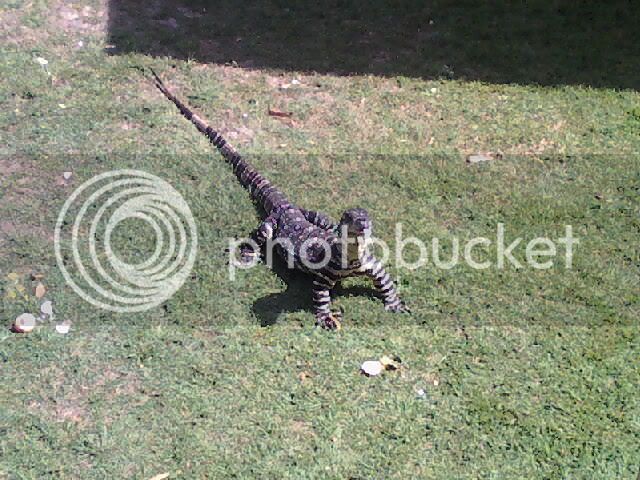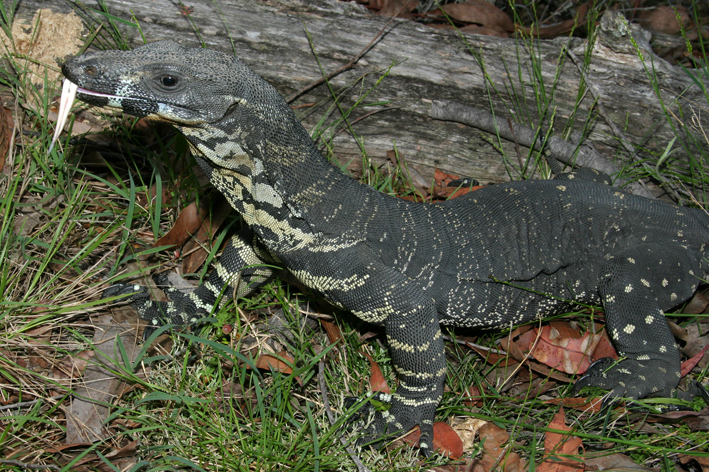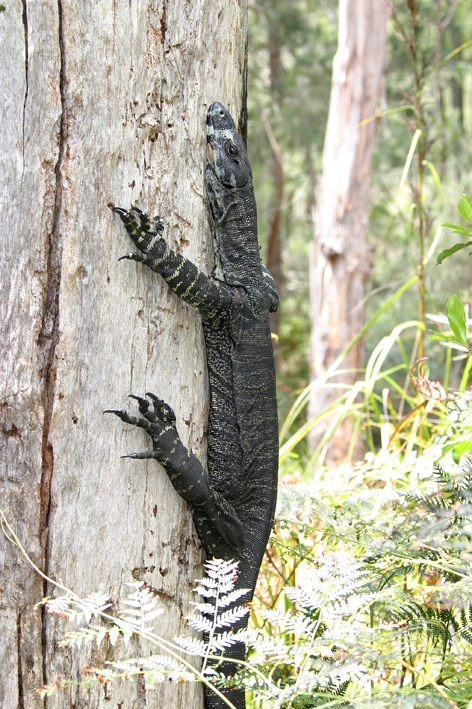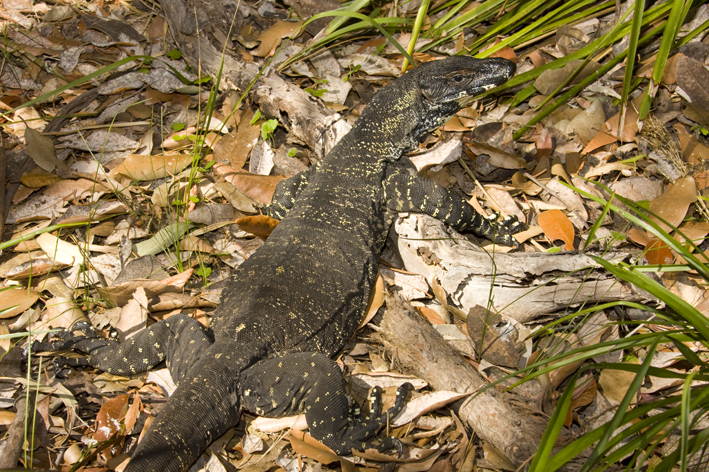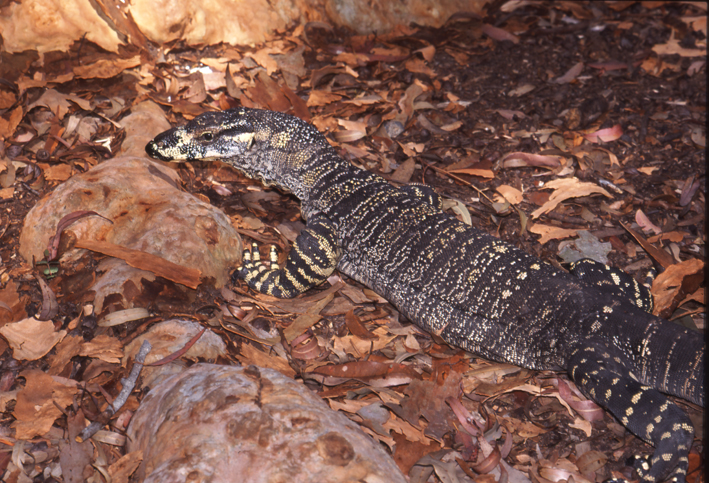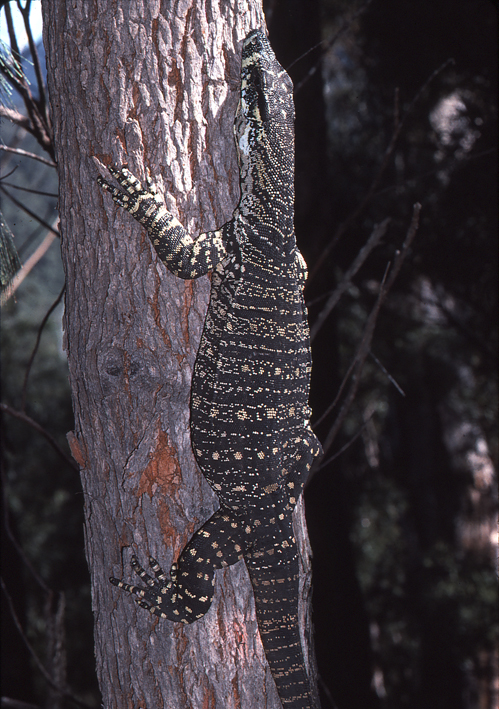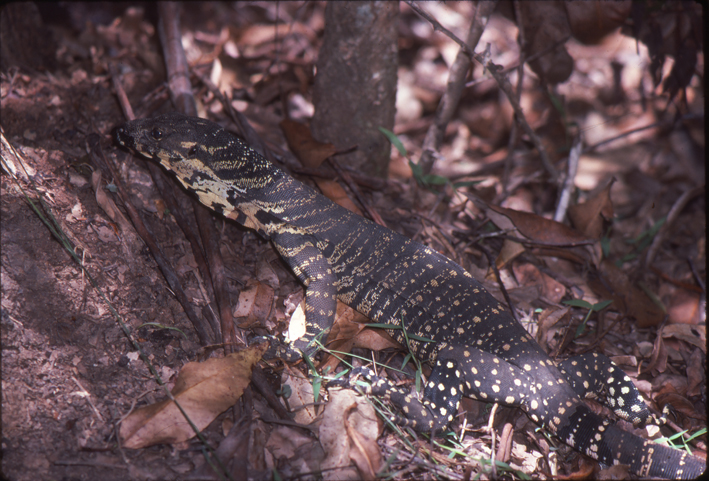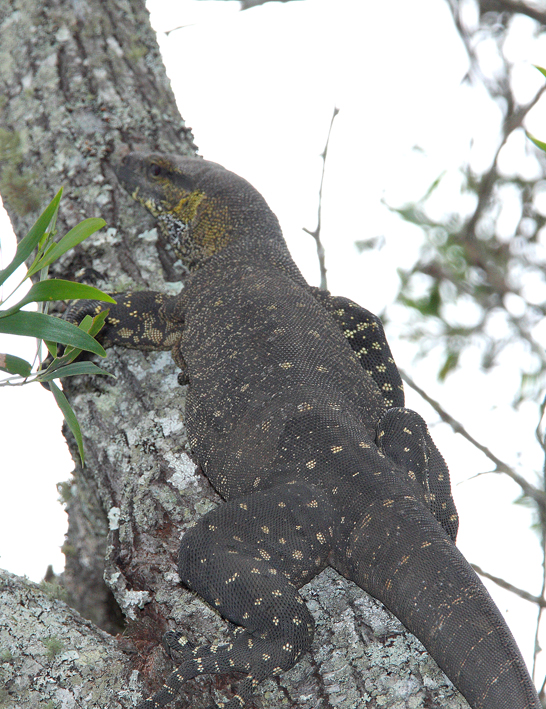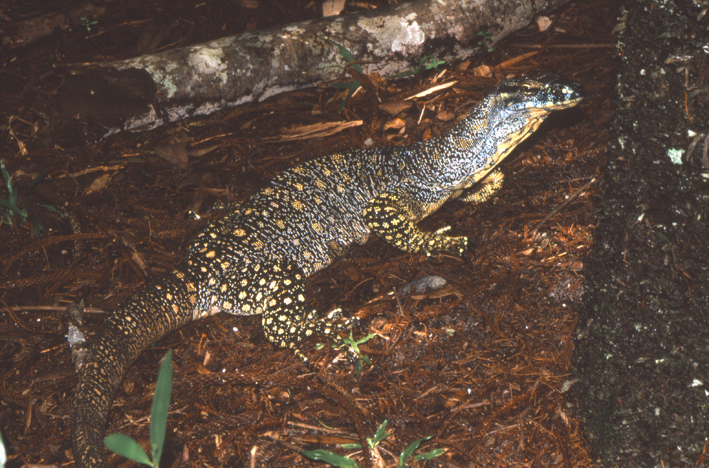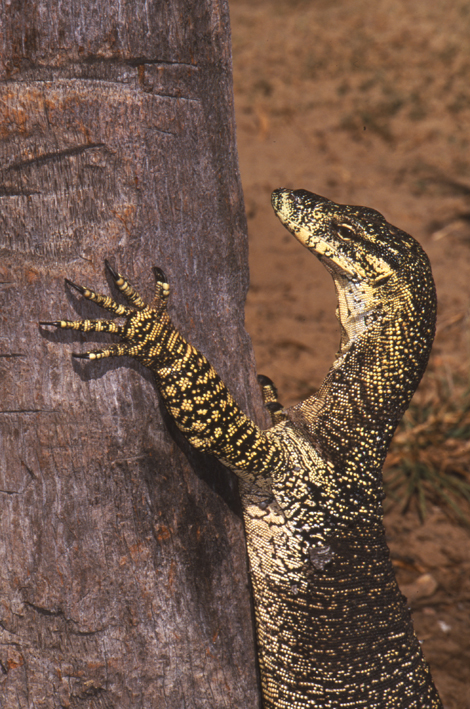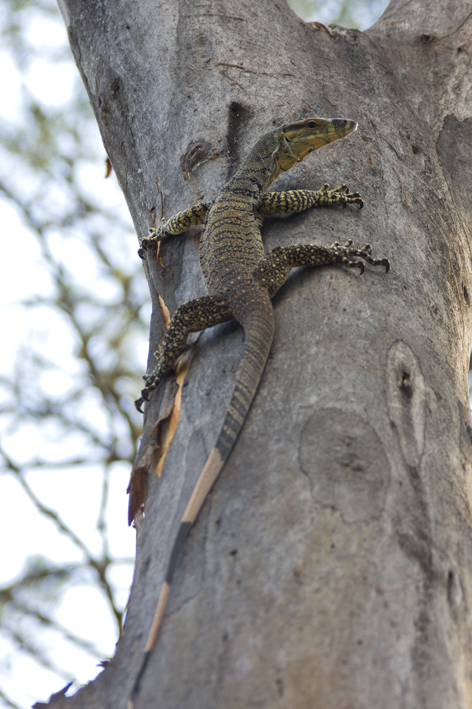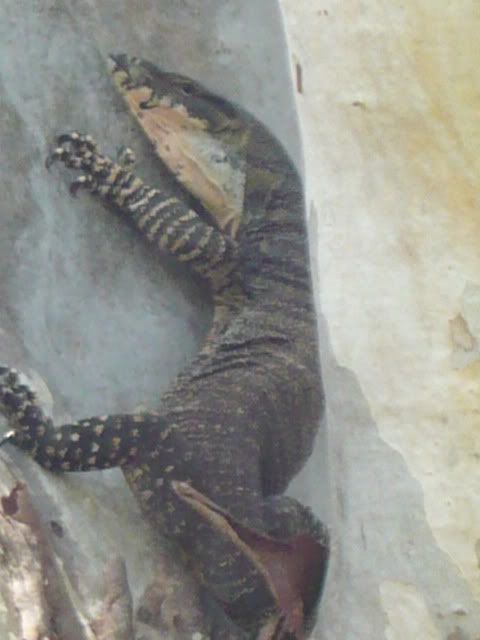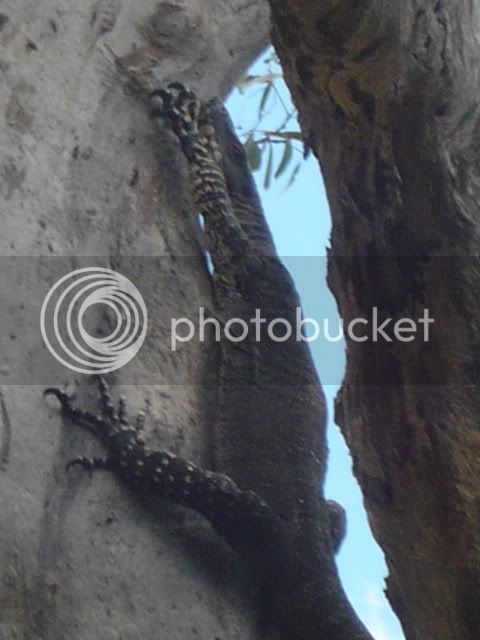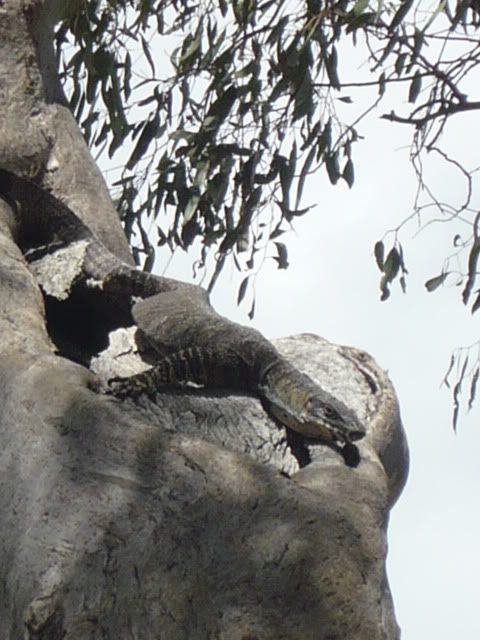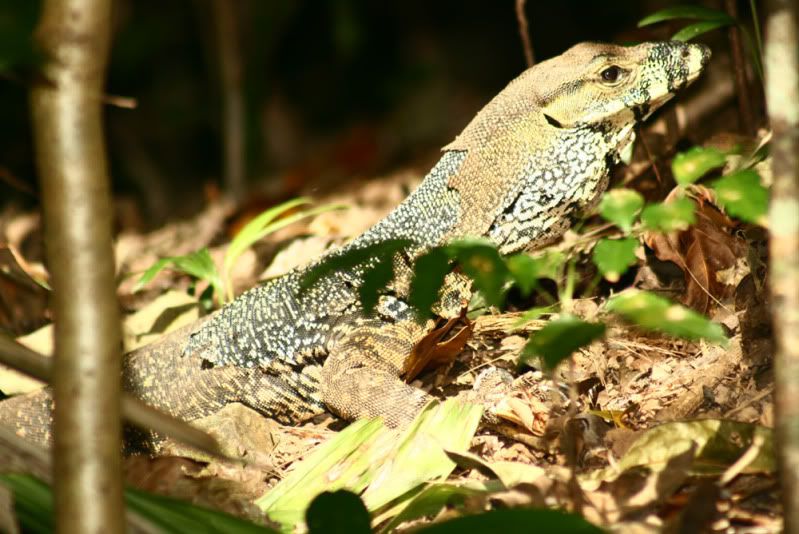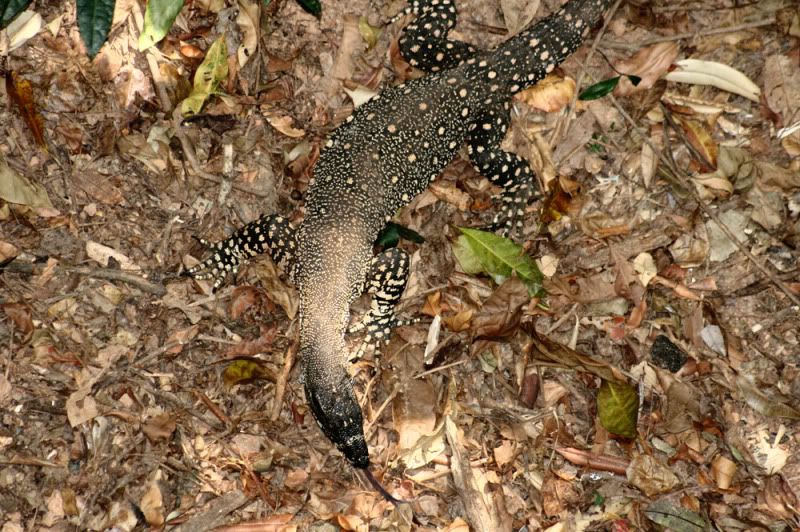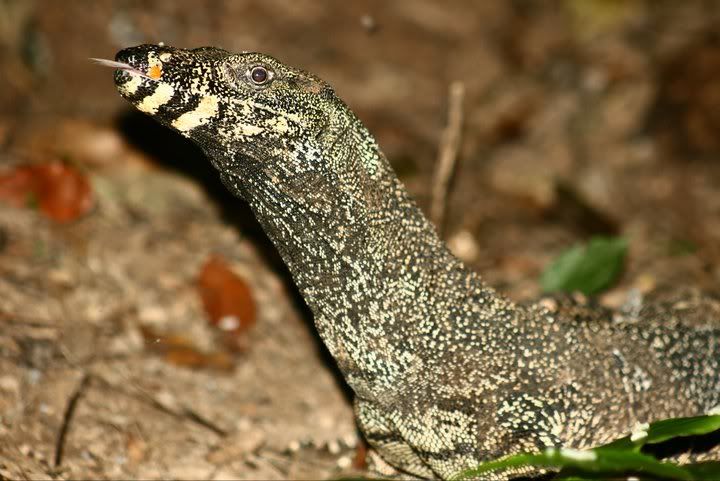Yes, Rondo, there are distinct pattern differences. From about the central coast of NSW and going south, the light coloured scales (that give them the lace pattern for which they were named) form bands around the body, with very little spotting. At the far south of the range, in Victoria and southern NSW, the animals are pretty dark, almost solid black. These three monitors are from the south coast of NSW, near Merimbula.
Going further north, the light speckling is more prominent and some animals can be quite brightly coloured. There is always a fair bit of variation within populations, though, with some darker than others. These monitors are from the Sydney region.
Going north from Sydney, the spots near the back end of the body start creeping forward. This one is from north of Newcastle
This one is from the north coast of NSW
By the time you get into southern Qld, the spots start to dominate and the neck banding starts to disappear in the adults. This one is from the Brisbane area
Noosa (again)
Yeppoon, central Qld coast
I almost got a shot of one at the far north of their range, in the Daintree, a couple of years ago but the monitor didn't stop as it ran across the road and kept going once it hit the other side. It was completely spotted. I've seen photographs that others have taken of the monitors up there and they have been fully spotted, too.
When you go west of the Great Dividing Range, into the Murray Darling drainage, you get a different looking lace monitor again. They're usually greyish or olive with thin black bands, rather than black with bands of light speckles.
In amongst these there are also Bell's morph animals, which have a separate 'on/off' gene that makes the whole pattern go whacko and form wide bands instead of narrow bands. They're most prominent west of the ranges, but also show up in some populations on the coast, particularly around the north coast of NSW and southern Qld.
